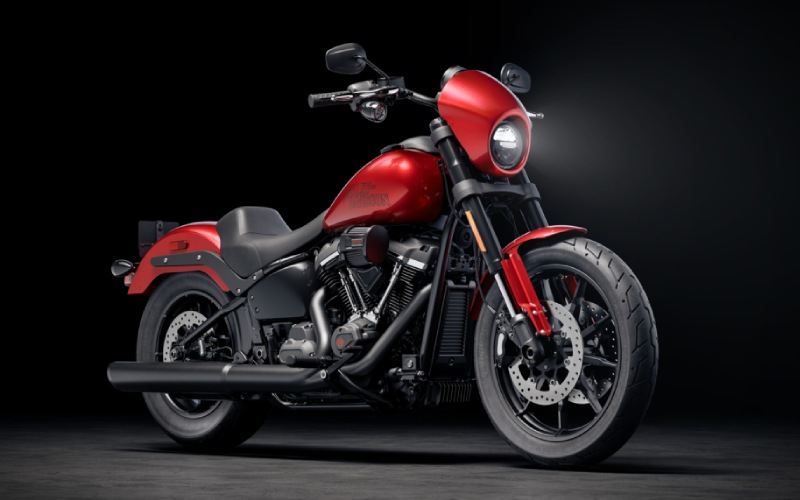Choosing Between Low Rider® S and Low Rider® ST for Weekend Escapes around Annapolis, MD

Eisenhauer's Chesapeake Harley-Davidson - Choosing Between Low Rider S and Low Rider ST for Weekend Escapes around Annapolis, MD
Riders who want West Coast style with modern performance often narrow the search to two standouts: the Low Rider S and the Low Rider ST. Both run the Milwaukee-Eight 117 H.O., pack Ride Modes, and bring LED lighting and USB-C convenience, yet they deliver very different experiences when you stretch a day ride into a weekend. Around waterfront routes and rolling farm roads near Annapolis, MD, clean airflow and luggage can transform a good ride into a great one—so how do you decide which package aligns with your plans?
Here is a deep, rider-focused look at how to choose between these two high-performance Softail machines, tailored for local roads, coastal breezes, and the kind of mixed-surface miles you rack up on spontaneous overnights. Eisenhauer's Chesapeake Harley-Davidson is serving Annapolis, MD, Laurel, MD, and Wilmington, DE, with perspective grounded in real-world riding and the latest 2025 updates.
Frequently Asked Questions:
Which model better suits long highway sections and unpredictable wind?
The Low Rider ST adds a lightweight, frame-mounted fairing shaped using computational fluid dynamics to reduce turbulence and keep steering light. That means cleaner airflow across your helmet and chest, less fatigue at sustained speeds, and reassuring stability when crosswinds funnel across bridges or open farmland. The Low Rider S is stripped and athletic—great for short blasts and carving—but if you spend hours on Route 50 or trace the coastline where gusts are common, the ST’s wind management is a meaningful advantage.
How do storage needs influence the choice?
If you carry a rain layer, small toolkit, or an extra pair of gloves, the Low Rider ST’s color-matched, lockable hard saddlebags deliver built-in practicality without bolting on aftermarket solutions. That symmetry also keeps mass central and low. The Low Rider S stays true to a minimal, performance-first silhouette, so storage is an add-what-you-need proposition—perfect for riders who keep it light or prefer a detachable bag only when necessary.
Is the ride quality different between them?
Both feature a tall rear monoshock that increases cornering clearance and maintains a planted feel in sweepers. Where they differ is in how you experience that composure over time. The Low Rider S communicates every input with a raw, connected feel that rewards active riding. The Low Rider ST layers on aerodynamic calm, which makes the same suspension and chassis feel more relaxed at speed. If you want to arrive fresher after back-to-back hours, the ST’s fairing contributes to a smoother ride without dulling response.
Beyond those fundamentals, both bikes share several modern touches that matter on real rides around the Bay and into the Piedmont. The four-inch analog-and-digital display surfaces gear position and Ride Modes at a glance, while the USB-C port keeps your phone charged for navigation and comms. LED lighting boosts conspicuity during early-morning departures and dusk returns. Rider Safety Enhancements—ABS, Traction Control, and Cruise Control—provide a confident baseline as conditions change, from wet patches under tree cover to gravel near rural turn-ins.
If you are leaning toward the Low Rider S, consider your typical day: shorter hops, frequent stops, and twisty stretches where a pared-down bike feels like an extension of you. The seating position and low-slung stance make it a natural for precise inputs and quick changes of direction. If you are leaning toward the Low Rider ST, think in terms of hours, not minutes—fairing protection and hard bags turn a late start into a destination option, whether that is an extra overlook along the Severn River or a spur-of-the-moment detour west toward rolling foothills.
Still unsure? Use this simple decision lens on your next planning session.
- Main ride length: If most rides stay under two hours, the Low Rider S feels perfectly dialed; if you regularly push past three, the Low Rider ST’s aerodynamics pay off.
- Gear you carry: If you prefer minimalist pockets-and-vest, the Low Rider S fits the brief; if you carry layers, small tools, or a camera, the Low Rider ST’s hard saddlebags are worth it.
- Wind exposure: If your favorite routes are wooded and sheltered, the Low Rider S shines; if you cross bridges or open shoreline, the Low Rider ST offers steadier airflow.
- Customization plans: If you want a clean canvas for performance upgrades and cosmetic touches, the Low Rider S is ideal; if you want touring utility from day one, the Low Rider ST starts you ahead.
Whichever direction you choose, you are getting a serious performance twin with a higher redline, forward-facing Heavy Breather intake, and a refined two-into-one exhaust that keeps the bike nimble and responsive. Both deliver the kind of mechanical engagement and road presence that define the brand—and both are ready for the kind of riding our Chesapeake region makes irresistible.
When your rides swing from coffee on Main Street to a sunset run along the shoreline, picking between the two becomes less about specs and more about rhythm. If that rhythm favors immediacy and a lean silhouette, the Low Rider S hits home. If it favors distance and readiness for the unexpected, the Low Rider ST wraps that same soul in long-haul comfort. Either way, you will find the right fit and the right guidance from a team that rides the same roads you do.
